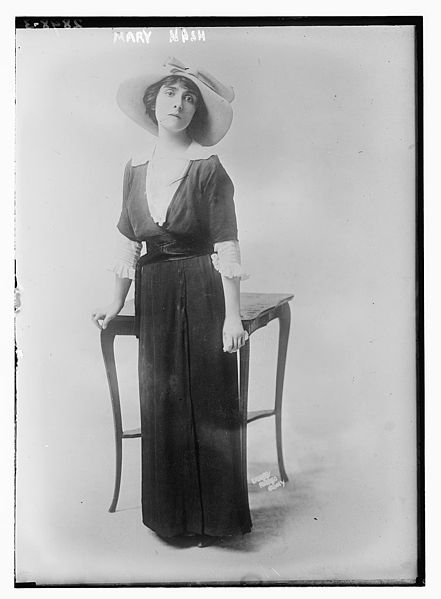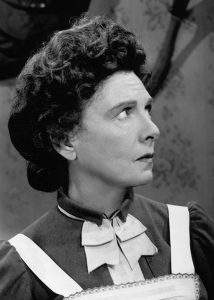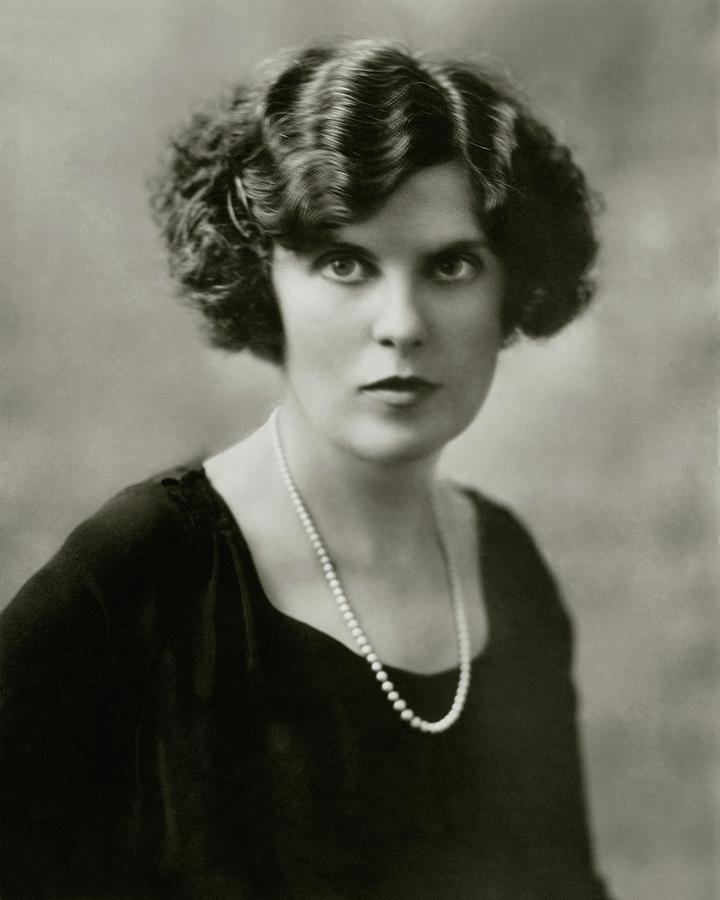
The last (for now) of our little look at famous actors and actresses from Albany. This one, Mary Nash, was said to have been born in Troy in 1884 (the Morning Telegraph begs to differ, as we will see), but grew up and was schooled in Albany. The family appears living on Broadway (the one in Manhattan) in 1905. She had her stage debut in as a dancer in 1904. She appears in the Internet Broadway Database in performances from the end of 1905 through 1932, including a turn in Shaw’s “Major Barbara” and 26 other productions. She appeared in three films in 1915 and 1916, but didn’t really break into movies until 1934, when she was 50. She was in the Shirley Temple films “Heidi” (playing the aptly named Fraulein Rottenmeier) and “The Little Princess,” but those with a love of screwball comedy will remember her best as Tracy Lord’s mother, Margaret Lord, in “The Philadelphia Story.” She was in 26 movies through 1946.

An article in the New York Morning Telegraph in 1903 announced her breaking into show business with the headline: “Managers Daughter Will Be An Actress – Mary Nash, Eighteen Years Old, Child of Keith’s Manager, Is Under Contract for Coming Season.”
Mary Nash, eighteen, daughter of Philip F. Nash, manager of Keith’s Theatre, is under contract for the coming season to play in a Broadway production. She has just been graduated from the Sargent School of Acting. She was born in Montreal, Canada, and received her early education in Albany.
An edition of “The Theater” in 1911 wrote about “Sisters Who Have Won Out on the Stage,” featuring Mary and sister Florence.
Mary Nash holds a unique place on the theatrical stage this season, for as the telephone girl in “The Woman” she has created a new role. She has come into her own without any theatrical traditions. Hard work and cleverness are the basis of her success, and a strong desire to go on the stage ever since she was a little girl living in Albany, where her father, now assistant manager of the Keith circuit, was connected with the business side of the theatrical profession.
Mary Nash spent most of her childhood and girlhood in Albany, and the thoughtful, dark-eyed little girl who would sit in one of the boxes of Proctor’s Theatre on North Pearl Street, week after week, looking with intentness upon what was taking place on the stage, is well remembered by many of the theatre-goers of the capital city.
After studying at the Albany High School and the Academy of the Holy Names, she went to Canada, where she completed her education at the Convent of St. Ann Le Chiene. In 1901 she entered the American Academy of the Dramatic Arts in New York, from which two years later she graduated. During the summer of 1903 she became a member of a stock company, playing the ingénue parts, and then joined the company headed by Ethel Barrymore. She played in “Captain Jinks,” “Alice Sit By The Fire,” and other plays in Miss Barrymore’s repertoire, and also with Mary Mannering and in “The Girl from Kays,” but it was in her creation of the role of Cicely in “The City,” played last season with Tully Marshall, that Miss Nash made her first big hit, followed this season by her success as Wanda Kelly. She is not only a clever actress, but has a fine soprano voice and dances very well.
She was noted as “an Albany girl” in most notices in the local papers. In 1922, The Times-Union headlined a piece “Mary Nash, Albany Girl, Lauded For Her Beautiful Hands.” Well, yes, although it’s a fine line between “lauded” and “compared to extinct reptiles for no apparent reason.”
Albanians who are always interested in their fellow townsmen whether it be for their achievements or for other reasons, will be interested in the following story taken from the New York American on Sunday regarding the wonderfully beautiful hands of Mary Nash, Albany girl and sister of Miss Florence Nash who appeared at Proctor’s Grand a few weeks ago.
Miss Nash is a graduate of the parochial schools of this city and up to the time of going upon the stage resided on Elm street, where her aunt, Miss Margaret Mack, still resides. Her mother Mrs. P.F. Nash resides in New York with her two daughters, Mary and Florence, and frequently visits her sister in this city.
The story concerning Miss Nash who is the star of Captain Applejack follows:
Does Mary Nash, the star of ‘Captain Applejack,’ possess the most beautiful hands extant? An advertisement so states and pictures of her hands are shown as ‘proof’ of the claim.
At any rate she has set many girls to scrutinizing their hands for comparisons with hers. Her hand is rather large, the fingers long and tapering.
When a Washington scientist saw the beautiful fingers illustrated, he smiled a wicked smile and calmly announced that Mary Nash’s hands were evolved by a ferocious, amphibious reptile, a monster that made life a terror for what ever type of reptiles existed 20,000,000 years ago. He added that Mary’s hands, fingers and nails, feet, toes and nails, had nothing whatever on those of our far back ancestor called Dimetrodon, and that he had just finished mounting the first known perfect skeleton of the creature to prove it.
One of the most extraordinary phenomenons of nature was the disappearance of human-like hands and feet during fifteen or more million years. The extinct amphibians, which preceded the arrival of true reptiles, were well equipped with human-like hands and feet. The succeeding reptiles specialized in near flippers for fore limbs, retaining within, fortunately for us, the skeleton of the hands and fingers.
After these great reptiles, mostly dinosaurs, became extinct, the more human-like hand reappeared in mammals, to be finally perfected by man or, if you prefer, by Mary Nash. You have a wide choice here. You can align yourself with the artists who favor Miss Nash’s hand and fingers as the super-beautiful in such things, or with the Washington scientist who insists that the hand and fingers of Dimetrodon, the amphibian of millions of years ago, were just as artistic and even more useful.
True, Dimetrodon got no limelight like Mary, but he got everything to eat that swam, walked or crawled. His story is quite as sensational as anything Rex Ingram has dug out for the screen.
No, we really have no idea what that was all about, but it was too remarkable not to share.

As mentioned, the Nash sisters were a thing – there was also Florence Nash. The Theater tells us this:
While Mary Nash was a member of the stock company in 1903, her younger sister, Florence Nash, used to accompany her back and forth from New York to Jersey City, where the company was located. The younger girl had never thought seriously of going on the stage, but one day the leading woman was taken ill and her place must be filled, and Florence Nash, with no time for consideration, said she would fill the breach. That was all the training she had in dramatic art, and she was the little girl that created the role of The Lisping Girl in the “Boys of Company B.” She had the second part in “The Darling of the Gods,” with Percy Haswell as the lead; she was in “Miss Hook of Holland” and in “An Every Day Man,” which had a long run in Chicago. Her work has been character parts and comedy.
The Internet Broadway Database has Florence, born in 1888, appearing in 15 plays from 1907-1930. She only had three film roles – in 1914, 1935, and 1939, but in 1939 she was one of “The Women,” Nancy Blake, in George Cukor’s masterpiece. (It also featured Ruth Hussey, who played alongside Mary Nash in “The Philadelphia Story” as Elizabeth Imbrie.)
Mary died in 1976 in Los Angeles, at 91. Florence died much younger in 1950, at the age of 61. An alert reader (and we would have no other kind) tells us that both are buried in St. Agnes Cemetery in Menands, in their mother’s Mack family tomb.

Leave a Reply